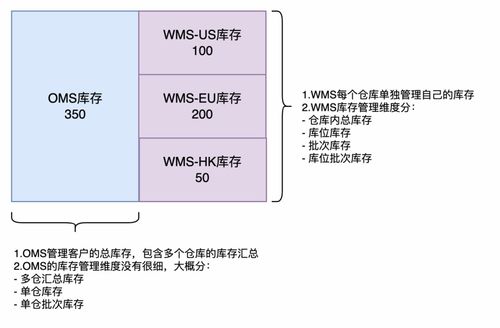Understanding OMS and WMS: A Comprehensive Guide

As businesses continue to evolve in the digital age, the role of management systems has become indispensable. Two such systems that play a crucial part in the operations of many organizations are Order Management Systems (OMS) and Warehouse Management Systems (WMS). In this detailed guide, we will explore the dimensions of these systems, their functionalities, and how they can enhance your business processes.
What is an OMS?

An Order Management System (OMS) is a software solution designed to streamline and automate the order management process. It serves as a centralized hub for all order-related activities, from the moment a customer places an order to the final delivery. The primary goal of an OMS is to ensure that orders are processed efficiently, accurately, and in a timely manner.
| Functionality | Description |
|---|---|
| Order Processing | Receiving, validating, and processing customer orders. |
| Inventory Management | Tracking inventory levels and ensuring product availability. |
| Order Fulfillment | Managing the picking, packing, and shipping of orders. |
| Order Tracking | Providing real-time visibility into the status of orders. |
| Customer Service | Handling customer inquiries and resolving issues related to orders. |
What is a WMS?

A Warehouse Management System (WMS) is a software solution designed to optimize warehouse operations. It provides real-time visibility into inventory levels, manages warehouse activities, and ensures efficient storage and retrieval of goods. The primary goal of a WMS is to maximize warehouse productivity and minimize costs.
| Functionality | Description |
|---|---|
| Inventory Management | Tracking inventory levels, locations, and movements. |
| Receiving | Managing the incoming of goods into the warehouse. |
| Storage | Optimizing storage space and managing the placement of goods. |
| Picking | Automating the process of selecting goods for orders. |
| Shipping | Managing the packing and shipping of goods. |
OMS and WMS: A Symbiotic Relationship
OMS and WMS are closely related and often work together to enhance business operations. While an OMS focuses on the order management process, a WMS focuses on warehouse operations. However, these systems are interconnected and rely on each other to function effectively.
Here’s how they work together:
- Order Placement: When a customer places an order, the OMS captures the details and sends them to the WMS.
- Inventory Check: The WMS checks the inventory levels and confirms whether the ordered items are available.
- Picking and Packing: If the items are available, the WMS generates a picking list, and the warehouse staff picks and packs the items.
- Shipping: Once the items are packed, the OMS generates a shipping label, and the items are shipped to the customer.
This symbiotic relationship ensures that orders are processed efficiently and that inventory levels are accurately maintained.
Benefits of Implementing OMS and WMS
Implementing an OMS and a WMS can bring numerous benefits to your business, including:
- Improved Efficiency: Automation of manual processes reduces the time and effort required to manage orders and inventory.
- Increased Accuracy: Real-time data and automated processes minimize errors and ensure accurate order fulfillment.
- Enhanced Customer Service


